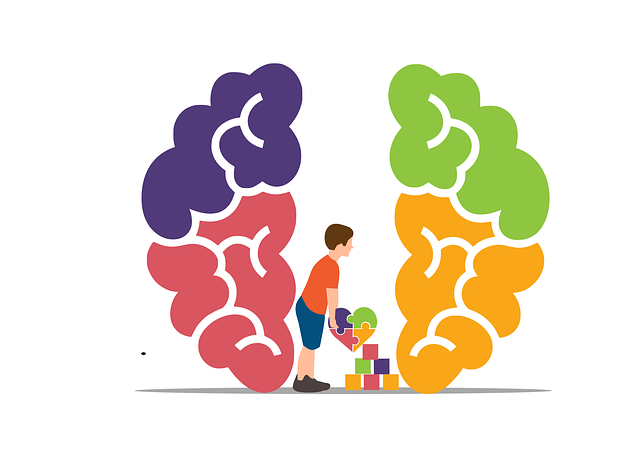Risk assessment and tailored strategies are vital for harm minimization in Colorado Springs drug abuse and substance abuse therapy settings, focusing on diverse demographics like youth, homeless individuals, and those with mental health conditions. The city's comprehensive harm reduction strategy integrates prevention, early intervention, and support services, reducing stigma and fostering inclusivity. Community engagement, collaborative efforts, and continuous monitoring through evidence-based practices empower patients and improve public health outcomes for Colorado Springs residents struggling with substance abuse therapy.
In Colorado Springs, navigating drug abuse requires a strategic approach—a comprehensive harm reduction strategy that tackles vulnerabilities within high-risk populations. This article delves into risk assessment and harm minimization planning as foundational tools for addressing substance abuse. We explore key areas including understanding risk assessment, identifying vulnerable groups, developing targeted strategies, implementing actionable solutions like therapy and community engagement, and continuously evaluating success through monitoring and adaptation in Colorado Springs’ context, emphasizing the importance of evidence-based practices in combating drug abuse.
- Understanding Risk Assessment: A Foundation for Harm Minimization
- Identifying Vulnerabilities: Targeting High-Risk Populations in Colorado Springs
- Developing a Comprehensive Harm Reduction Strategy for Drug Abuse
- Implementable Actions: From Therapy to Community Engagement
- Monitoring and Evaluating Success: Continuous Improvement in Substance Abuse Therapy
Understanding Risk Assessment: A Foundation for Harm Minimization

Understanding Risk assessment forms the bedrock upon which effective harm minimization planning in mental health settings, including Colorado Springs drug abuse and substance abuse therapy centers, is built. It involves a systematic analysis of potential hazards and their likelihood and severity of impact on clients. This process enables mental health professionals to proactively identify risks within their practice areas, whether it’s related to individual clients or the broader facility.
By conducting thorough risk assessments, professionals can implement tailored strategies for harm minimization. This may involve modifying treatment plans, enhancing safety protocols, providing additional support services like self-care practices, and ensuring access to emotional healing processes. Embracing these measures fosters a safer environment, ultimately contributing to improved client outcomes in Colorado Springs substance abuse therapy settings.
Identifying Vulnerabilities: Targeting High-Risk Populations in Colorado Springs

In Colorado Springs, identifying vulnerabilities among high-risk populations is a critical step in risk assessment and harm minimization planning. The city’s diverse demographics present unique challenges, particularly regarding drug abuse and substance use disorders. Focused efforts to address these issues need to be tailored to specific groups, such as youth at risk, individuals experiencing homelessness, and those struggling with mental health conditions like anxiety. Enhancing resilience building within these communities is key to mitigating the risks associated with substance abuse, including addiction, overdose, and related social repercussions.
Public awareness campaigns development plays a pivotal role in this context, aiming to educate residents about the signs of drug abuse, available treatment options, and strategies for anxiety relief. By increasing public understanding and promoting accessible substance abuse therapy, Colorado Springs can foster a supportive environment that discourages harmful behaviors while encouraging individuals to seek help. This comprehensive approach not only targets high-risk populations but also contributes to building a more resilient community overall.
Developing a Comprehensive Harm Reduction Strategy for Drug Abuse

In addressing Colorado Springs drug abuse, a Comprehensive Harm Reduction Strategy is essential to effectively mitigate the impact of substance use disorders. This strategy involves a multi-faceted approach that includes prevention, early intervention, and support services tailored to meet the unique needs of individuals and communities affected by drug abuse. By integrating Trauma Support Services and Mental Health Education Programs Design, Colorado Springs can create a more holistic environment that addresses both the root causes and immediate consequences of drug misuse. Harm reduction strategies aim to minimize negative outcomes associated with drug use without necessarily requiring abstinence, making them particularly effective in diverse settings.
Beyond these programs, Mental Illness Stigma Reduction Efforts play a pivotal role in fostering an inclusive and supportive community. By reducing the stigma surrounding mental health and addiction, individuals are more likely to seek help without fear of judgment or discrimination. This not only encourages treatment-seeking behaviors but also promotes better overall mental well-being within the community. Ultimately, a comprehensive harm reduction strategy that incorporates these elements can lead to significant improvements in public health outcomes for Colorado Springs residents grappling with drug abuse issues.
Implementable Actions: From Therapy to Community Engagement

In addressing Colorado Springs drug abuse and substance use disorders, implementing effective actions goes beyond therapy sessions. Beyond individual treatment, community engagement plays a pivotal role in harm minimization. This can involve collaborative efforts with local organizations to develop strategies that build empathy between service providers and individuals struggling with addiction. By fostering understanding and connection through empathy building strategies, barriers to care can be reduced, leading to improved access to services.
Additionally, integrating conflict resolution techniques within these community initiatives is crucial. Effective communication and de-escalation skills empower participants to navigate challenging interactions, reduce tension, and promote safe, supportive environments. Promoting mental wellness through integrated approaches that address both substance use and underlying psychological factors ensures a holistic approach to recovery, enhancing the long-term success of harm minimization efforts in Colorado Springs.
Monitoring and Evaluating Success: Continuous Improvement in Substance Abuse Therapy

Monitoring and evaluating the success of Substance Abuse Therapy is a dynamic process that drives continuous improvement in Colorado Springs Drug Abuse treatment centers. Regular assessments allow therapists to gauge progress, identify areas needing adjustment, and tailor interventions for optimal patient outcomes. By systematically reviewing treatment plans, measuring key performance indicators (KPIs), and collecting patient feedback, therapists can ensure the effectiveness of their approach.
This ongoing cycle of monitoring and evaluation fosters a culture of evidence-based practice, where what works is continually refined and enhanced. Moreover, it empowers patients by involving them in their recovery journey. Through collaborative goal-setting, regular check-ins, and feedback sessions, individuals receive support for not only addressing substance abuse but also developing confidence boosting and emotional regulation skills, ultimately promoting their emotional well-being.
In addressing Colorado Springs drug abuse, a comprehensive harm reduction strategy is paramount. By understanding risk assessment and implementing targeted interventions, particularly among high-risk populations, we can effectively minimize the dangers associated with substance abuse. Through a combination of therapy, community engagement, and continuous monitoring, Colorado Springs can forge a path toward improved outcomes in substance abuse therapy, ultimately reshaping the landscape of local drug abuse.














